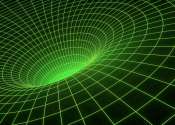Scientists take another theoretical step toward uncovering the mystery of dark matter, black holes
Much of the matter in the universe remains unknown and undefined, yet theoretical physicists continue to gain clues to the properties of dark matter and black holes. A study by a team of scientists including three from Stony ...









